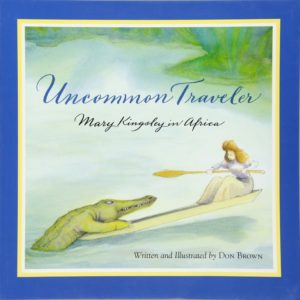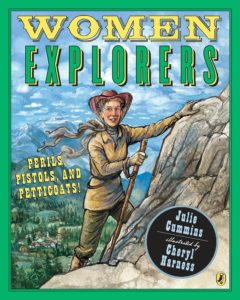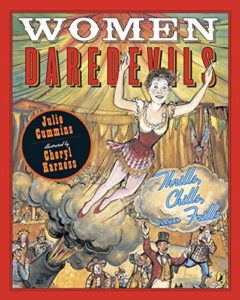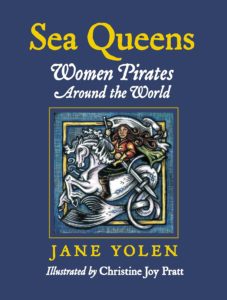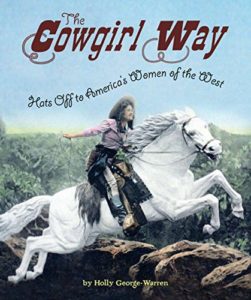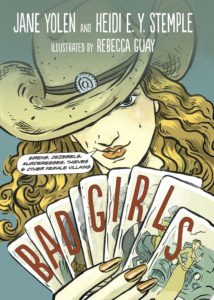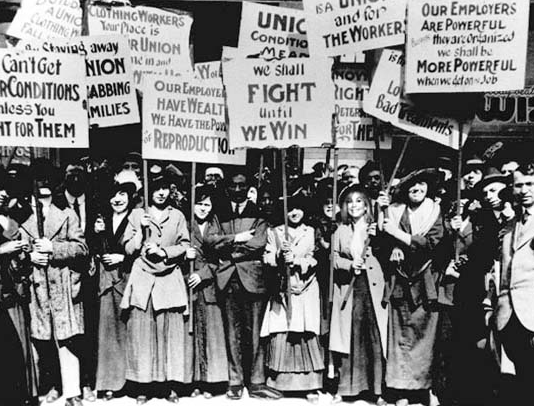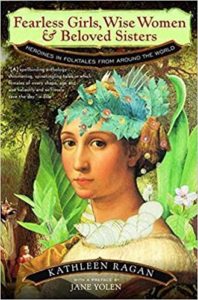
|
Edited by Kathleen Ragan, Fearless Girls, Wise Women, and Beloved Sisters (W.W. Norton & Company, 2000) is a collection of over 100 folk and fairy tales from around the world, all featuring women as heroines. The tales are categorized by geographical region: Europe, North and South America, Asia, the Pacific, Sub-Saharan Africa, and North Africa and the Middle East. For all ages. |
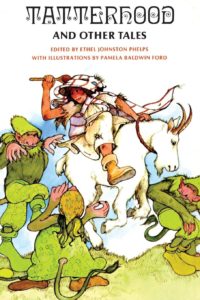 |
Edited by Ethel Johnston Phelps, Tatterhood and Other Tales (The Feminist Press at CUNY, 1993) is a collection of 25 multicultural stories, all with feisty female protagonists. For ages 8 and up. |
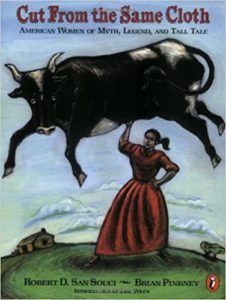
|
By Robert San Souci, Cut From the Same Cloth (Puffin, 2000) is a collection of American folk tales featuring brave and clever heroines, among them the Chippewa Star Maiden, Molly Cotton-Tail (Brer Rabbit’s savvy sister), Sweet Betsey from Pike, Sister Fox, and the Hawaiian Hiiaka. For ages 8 and up. |
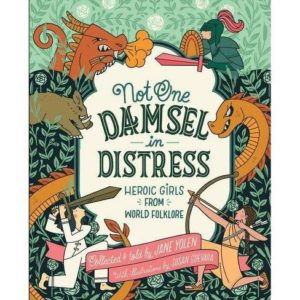
|
Edited by Jane Yolen, Not One Damsel in Distress (Harcourt, 2000) is a collection of 13 tales of brave women and girls from around the world and across time – among them the stories of Nana Miriam from Nigeria, who saves her father from a vicious hippopotamus, and Molly Whuppie of England, who outwits a giant and ends up a queen. Included is an extensive section of notes on the stories. For ages 8-12. |
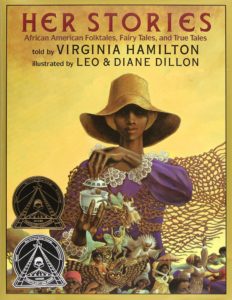 |
By Virginia Hamilton, Her Stories (Blue Sky Press, 1995) is a collection of 19 African-American folk, fairy, and true tales, all with strong female characters. Each story is followed by a brief note on its history. For ages 5 and up. |
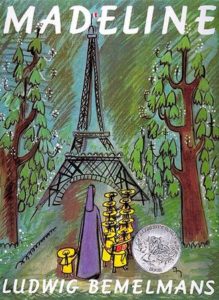 |
The heroine of Ludwig Bemelmans’s wonderful Madeline (Viking Juvenile Books, 2000) is a self-actualized redhead who is not afraid of anything. (“To the tigers in the zoo/Madeline just said ‘Pooh, pooh!’”). For ages 3-7. |
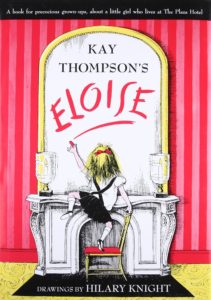 |
Kay Thompson’s Eloise (Simon & Schuster Books for Young Readers, 1969) is a trouble-prone and utterly self-confident six-year-old who lives with her nanny and pet turtle in New York’s Plaza Hotel. A role model for uppity women everywhere. For ages 4-8. |
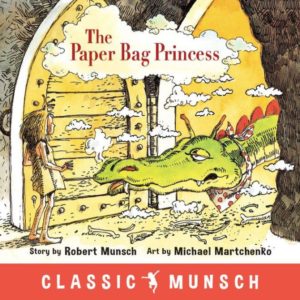
|
Robert Munsch’s The Paper Bag Princess (Annick Press, 1992) is a role-reversal tale in which a dragon attacks on the eve of Princess Elizabeth’s wedding, smashing her castle, torching her wardrobe, and kidnapping her prince. The resourceful Elizabeth makes a dress from a paper bag, tracks down the dragon, and rescues the prince – who tells her ungratefully that she smells like ashes and looks a mess. Elizabeth promptly dumps him and sets off to live a happy life of her own. For ages 4-8. |
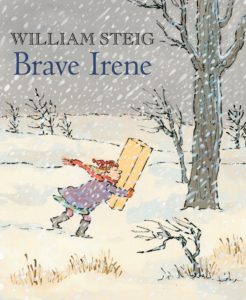
|
In William Stieg’s Brave Irene (Square Fish, 2011), Irene’s dressmaker mother has fallen ill and can’t deliver the beautiful gown for the duchess to wear that night to a ball. So indomitable Irene sets off for the palace, gown in hand, in the teeth of a terrible snowstorm, and bravely manages to soldier through. It’s a sort of Little-Engine-That-Could story, with an adorable heroine. For ages 4-8. |
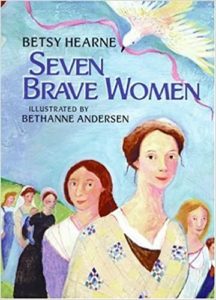
|
Betty Hearne’s Seven Brave Women (Greenwillow Books, 2006) is the tale of seven of her female ancestors, starting with her great-great-grandmother who (bravely) sailed to America on a wooden ship. It’s reminiscent of Robert Lawson’s 1941 Caldecott-winning family history They Were Strong and Good (Viking Juvenile, 2006). (Try both – and write a family history of your own?) For ages 5-9. |
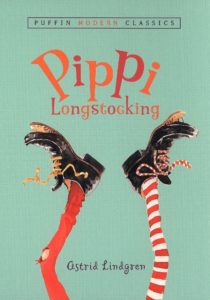
|
Pippi of Astrid Lundgren’s Pippi Longstocking (Puffin, 2005) is unconventional, fiercely independent, and incredibly strong – and she lives on her own, with a pet monkey and a horse on the porch, and pays for her needs from a suitcase full of gold pieces. Neighbors Tommy and Annika are in awe. For ages 7-11. |
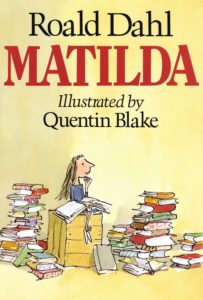
|
In Roald Dahl’s Matilda (Puffin, 2013), brilliant and largely self-educated Matilda – afflicted with horrible parents and a monstrous school principal who flings students around by their pigtails – uses her gifts to stand up for herself, save her beloved teacher Miss Honey, and defeat the dreadful Miss Trunchbull. For ages 7-11. |
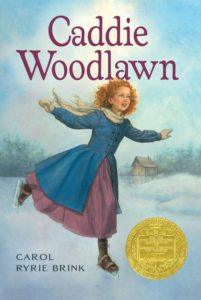
|
Carol Ryrie Brink’s Newbery-winning Caddie Woodlawn (Aladdin, 2006) stars a brave, adventurous (and mechanically-minded) little girl, growing up in the woods of Wisconsin in the mid-1800s. Tomboy Caddie is the despair of her mother, her older sister Clara, and her snooty cousin Annabel, but her independence and kind-heartedness prove to be saving graces, and by the end of the book Caddie has come to understand more about herself and the people around her. She’s also saved the neighboring Indian tribe from an attack by frightened settlers and learned that her father is heir to a dukedom. An exciting read for ages 8 and up. |
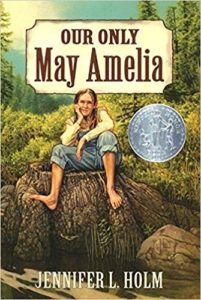
|
In Jennifer L. Holm’s Newbery winner Our Only May Amelia (HarperCollins, 2001), 12-year-old May Amelia, growing up in the state of Washington in 1899 along with seven older brothers, is the only girl in the settlement and is determined never to be a Proper Young Lady. Based on the diaries of the author’s great-aunt, the original May Amelia. For ages 9 and up. |
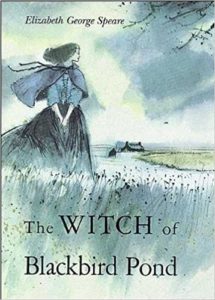
|
Sixteen-year-old Kit Tyler, headstrong heroine of Elizabeth George Speare’s The Witch of Blackbird Pond (Sandpiper, 2011) has been sent from Barbadoes to live with her Puritan aunt and family in Connecticut. Unhappy and unable to fit in, Kit finds a friend in Hannah Tupper, a Quaker, suspected by the villagers of being a witch. A wonderful story for ages 9 and up. |
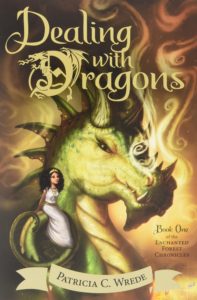
|
Patricia Wrede’s Enchanted Forest series features the strong-minded (or possibly “stubborn as a pig”) Princess Cimorene who prefers fencing to embroidery. In the first of the series, Dealing with Dragons (Sandpiper, 2003), she foils a plot by wicked wizards, fends off would-be rescuers, and lands herself a satisfying job as Chief Cook and Librarian to Kazul, the (female) king of the dragons. Sequels are Searching for Dragons, Calling on Dragons, and Talking to Dragons. For ages 9 and up. |
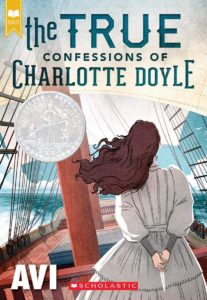
|
In Avi’s The True Confessions of Charlotte Doyle (Scholastic, 2012), the year is 1832 and 13-year-old Charlotte is sent by ship from England to join her family in Rhode Island. All, however, is not as it first appears: the gentlemanly captain is actually a vicious brute, and soon conventional Charlotte comes to side with the crew – and joins them, learning to climb the rigging and do all the work of ordinary sailors. When she attempts to help her mates take over the ship, the captain apprehends her and accuses her of murder; when he finally falls overboard and drowns, the crew makes Charlotte the captain. Restored to her prim and proper family in Providence, Charlotte finds she can no longer adjust to the life she once knew. Her beliefs have changed; and at the end she’s off to return to her ship. For ages 9 and up. |
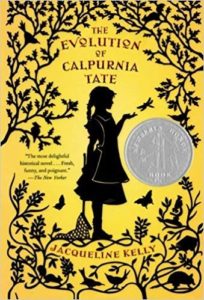
|
In Jacqueline Kelly’s The Evolution of Calpurnia Tate (Square Fish, 2011), 11-year-old Calpurnia – known to her family as Callie Vee – lives with her parents and six brothers on a cotton plantation in Texas in 1899. (Her favorite brother is Harry, the oldest, but I have a soft spot for ten-year-old Travis, who names his kittens after gunslingers.) As the book progresses, bright and curious Callie Vee becomes fascinated with science and disenchanted with the restricted and ladylike future her mother has planned for her. Luckily she finds a kindred spirit in her curmudgeonly grandfather. After Callie Vee is forbidden to check Darwin’s Origin of Species out of the library, her Granddaddy not only lends her his copy, but starts taking her with him on his specimen-collecting expeditions. A wonderful story of a science-minded girl taking control of her life. For ages 10 and up. |
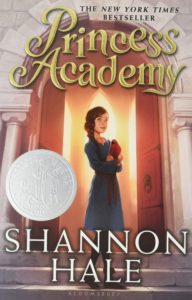
|
Shannon Hale’s Princess Academy (Bloomsbury USA Children’s Books, 2007) is a satisfying and empowering story: when the prince declares that he will choose a bride from their mountain mining village, the eligible girls of Mount Eskel are sent to the “Princess Academy” to learn the skills and behaviors suitable for the prince’s bride. Eventually the girls come together to deal with their elitist tutor, Olana, and to fend off an attack by bandits, and Miri, the heroine, learns a lot about her own strengths and desires – which don’t involve the prince. For ages 10-14. |

|
In Karen Cushman’s The Loud Silence of Francine Green (Clarion Books, 2006), set at the height of the McCarthy era, Francine is a student at All Saints School for Girls, presided over by the bullying Sister Basil, and wants nothing more than to keep her head down and stay out of trouble. Then Sophie Bowman joins the class – fiery, rebellious, a free thinker, and a questioner of authority – and by the end of the book, Francine, too, finds her voice. For ages 11 and up. |
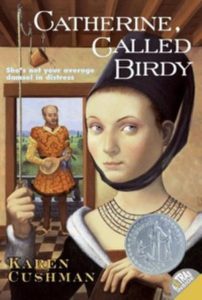
|
Set in the 13th century, Karen Cushman’s Catherine, Called Birdy (Sandpiper, 2012) stars 14-year-old Catherine (“bit by fleas and plagued by my family”), who has little interest in conventional womanly pursuits – she’d rather be a peddler, a minstrel, or a Crusader – but she has to cope with her debt-ridden father’s ploys for an arranged marriage. For ages 12 and up. |
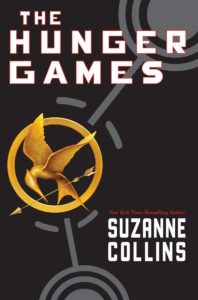
|
Susan Collins’s The Hunger Games (Scholastic, 2010) is set in a post-apocalyptic future America, where each year 24 selected teenagers are sent to fight to the death in a televised battle known as the Hunger Games. Sixteen-year-old Katniss Everdeen becomes a participant in the Games when she volunteers to take the place of her younger sister. It’s a tense and exciting book, and Katniss is one strong girl. Sequels are Catching Fire and Mockingjay. For ages 13 and up. |
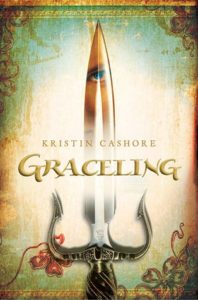
|
Teenaged Katsa, the main character of Kirstin Cashore’s The Graceling (Graphia, 2009), lives in a world where certain people develop a special power called a Grace – and Katsa’s Grace makes her an invincible warrior. Political intrigue, gripping adventure, romance, and an impressive young girl make this a compelling read for ages 14 and up. Sequels are Fire and Bitterblue. |
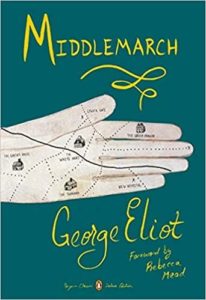
|
George Eliot’s Middlemarch – originally published in 1871, now available in many editions – is a marvelous and multifaceted novel, rich in interlocking plots. At heart, it’s a story of women’s issues in a confining society, centering around idealistic Dorothea Brooke who – thirsting for education – marries the elderly Edward Casuabon, whom she believes to be writing a great work. She soon finds herself trapped in a loveless marriage and deprived of independence. For older teenagers and adults. |
|
More great books about great girls! Rise is a wonderful source of recommended feminist books for ages 0-18. Many terrific annotated lists. |
|
See A Mighty Girl for terrific recommendations for books, movies, and more. |
